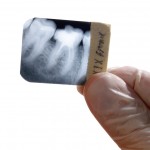
The diagnosis of vertical root fracture (VRF) can be challenging and there is uncertainty regarding their prevalence. They are considered to be more common in root treated teeth where studies of extracted teeth have suggested a prevalence of 11-20% compared with 2-5% in teeth extracted with presumed VFR have shown ranges between 2-5%.
Cone-beam computed tomography (CBCT) has been suggested as a diagnostic tool for VFR owing to limitation of conventional radiography. The aim of this review was to investigate the diagnostic ability of CBCT in detecting VRFs in endodontically treated teeth
Methods
Searches were conducted in the Medline, Embase, AMED, Healthstar, LILACS, MEDION, Chinese Biomedical Literature Database (via CNKI), SCOPUS, SIGLE, ProQuest Theses and Dissertations and Web of Science databases. Prospective or retrospective clinical diagnostic studies comparing CBCT imaging against a reference standard of direct observation of the tooth root surface via orthograde retreatment, exploratory open-flap surgery, or visual inspection of extracted teeth without or with the aid of stains with a consecutive period of patient enrollment were considered.
Two reviewers selected studies, abstracted data and assessed study quality using the modified Quality Assessment of Diagnostic Accuracy Studies (QUADAD) checklist. Sensitivity, specificity, and positive and negative predictive values (PPV and NPV) were calculated. Owing to significant clinical heterogeneity no meta-analysis was conducted.
Results
- 4 studies were included.
- All the included studies were considered to be at high risk of bias.
- Calculated prevalence of VRF in studies ranged from (40-90%)
- Sensitivity values varied from 84% (0.64–0.95) to 100% (0.83–1.00)
- Specificity values varied from 64% (0.35–0.87) to 100% (0.03–1.00)
- PPV ranged from 71% (0.51– 0.87) to 100% (0.63–1.00)
- NPV ranged from 50% (0.01– 0.99) to 100% (0.84–1.00)
Conclusions
The authors concluded:
Because of the significant imprecision in the range of reported estimates and the biases observed in the included studies, there is currently insufficient evidence to suggest that CBCT is a reliable test in detecting VRFs in endodontically treated teeth.
Comments
A number of previous reviews of CBCT for the diagnosis of VRFs have been conducted (other references) these have combined both in-vitro and in-vivo studies. This is the first review to have focused solely on in-vivo studies. The included studies are small and at high risk of bias and these problems are well covered in the discussion section of the review. Consequently the accuracy of CBCT for diagnosing VRF is unknown and further high quality well reported studies following the STARD reporting criteria are needed.
Links
Primary paper
Chang E, Lam E, Shah P, Azarpazhooh A. Cone-beam Computed Tomography for Detecting Vertical Root Fractures in Endodontically Treated Teeth: A Systematic Review. J Endod. 2016 Feb;42(2):177-85. doi: 10.1016/j.joen.2015.10.005. Epub 2015 Nov 26. Review. PubMed PMID: 26631300.
Other references
Dental Elf -22nd July 2015 – Root fracture detection with CBCT
Talwar S, Utneja S, Nawal RR, Kaushik A, Srivastava D, Oberoy SS. Role of Cone-beam Computed Tomography in Diagnosis of Vertical Root Fractures: A Systematic Review and Meta-analysis. J Endod. 2016 Jan;42(1):12-24. doi: 10.1016/j.joen.2015.09.012. Review. PubMed PMID: 26699923

Vertical root fracture diagnosis with CBCT – insufficient evidence https://t.co/3FPFuH8Aok
Is CBCT a reliable test for detecting vertical root fractures?
https://t.co/3FPFuH8Aok
Insufficient evidence that CBCT is a reliable test in detecting vertical root fractures
https://t.co/3FPFuH8Aok
Vertical root fracture diagnosis with CBCT – insufficient evidence https://t.co/sTGWpmfLon vía @sharethis
Is CBCT a reliable test for vertical root fracture? https://t.co/3FPFuH8Aok
Don’t miss- Vertical root fracture diagnosis with CBCT – insufficient evidence https://t.co/3FPFuH8Aok